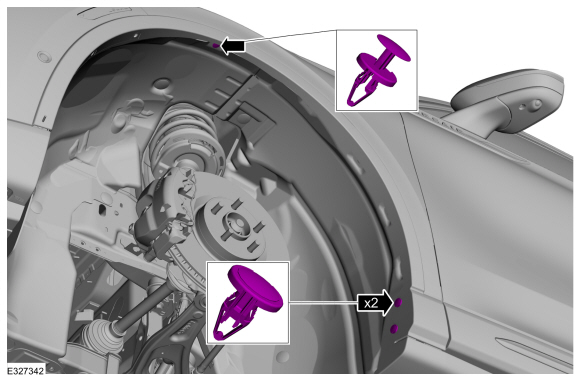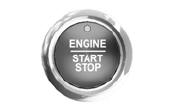Ford Escape: Engine System - General Information / General Procedures - Cylinder Head Distortion
Special Tool(s) / General Equipment
| Feeler Gauge |
Check
NOTE: Refer to the appropriate Section 303-01 for the specification.
-
NOTE: Make sure all cylinder head surfaces are clear of any gasket material, silicone sealant, oil and coolant. The cylinder head surface must be clean and dry before running a flatness check.
NOTE: Use a Straightedge that is calibrated by the manufacturer to be flat within 0.005 mm (0.0002 in) per running foot of length, such as Snap-On® GA438A or equivalent. For example, if the Straightedge is 61 cm (24 in) long, the machined edge must be flat within 0.010 mm (0.0004 in) from end to end.
Using a Straightedge and a Feeler Gauge Set, inspect the cylinder head for flatness in the sequence shown.
Use the General Equipment: Feeler Gauge
 |
 General Procedures - Cylinder Bore Taper
General Procedures - Cylinder Bore Taper
Check
NOTE:
Refer to the appropriate Section 303-01 for the specification.
Measure the cylinder bore at the top, middle and bottom
of piston ring travel in 2 directions as indicated...
 General Procedures - Engine Noise Identification and Location
General Procedures - Engine Noise Identification and Location
NOTE:
This procedure uses multiple tools/methods to help locate the
source of engine noise. It may be necessary to repeatedly compare the
sound between the tools/methods to help locate the source of the noise...
Other information:
Ford Escape 2020-2025 Service Manual: Removal and Installation - Intermediate Shaft
Materials Name Specification Motorcraft® MERCON® ULV Automatic Transmission FluidXT-12-QULV WSS-M2C949-A, MERCON® ULV Removal Remove the front halfshaft RH . Remove and discard the circlip and O-ring seal from the intermediate shaft...
Ford Escape 2020-2025 Service Manual: Diagnosis and Testing - Daytime Running Lamps (DRL)
Diagnostic Trouble Code (DTC) Chart Diagnostics in this manual assume a certain skill level and knowledge of Ford-specific diagnostic practices. REFER to: Diagnostic Methods (100-00 General Information, Description and Operation). Diagnostic Trouble Code Chart Module DTC Description Action BCM B124A..
Categories
- Manuals Home
- 4th Generation Ford Escape Owners Manual
- 4th Generation Ford Escape Service Manual
- Power Outlet - Vehicles With: 12V Power Outlet
- Accessing the Trip Computer. Resetting the Trip Computer
- Fuel Quality
- New on site
- Most important about car
Push Button Ignition Switch

Switching the Ignition Off
When the ignition is on or in accessory mode, press the push button ignition switch once without your foot on the brake pedal.
